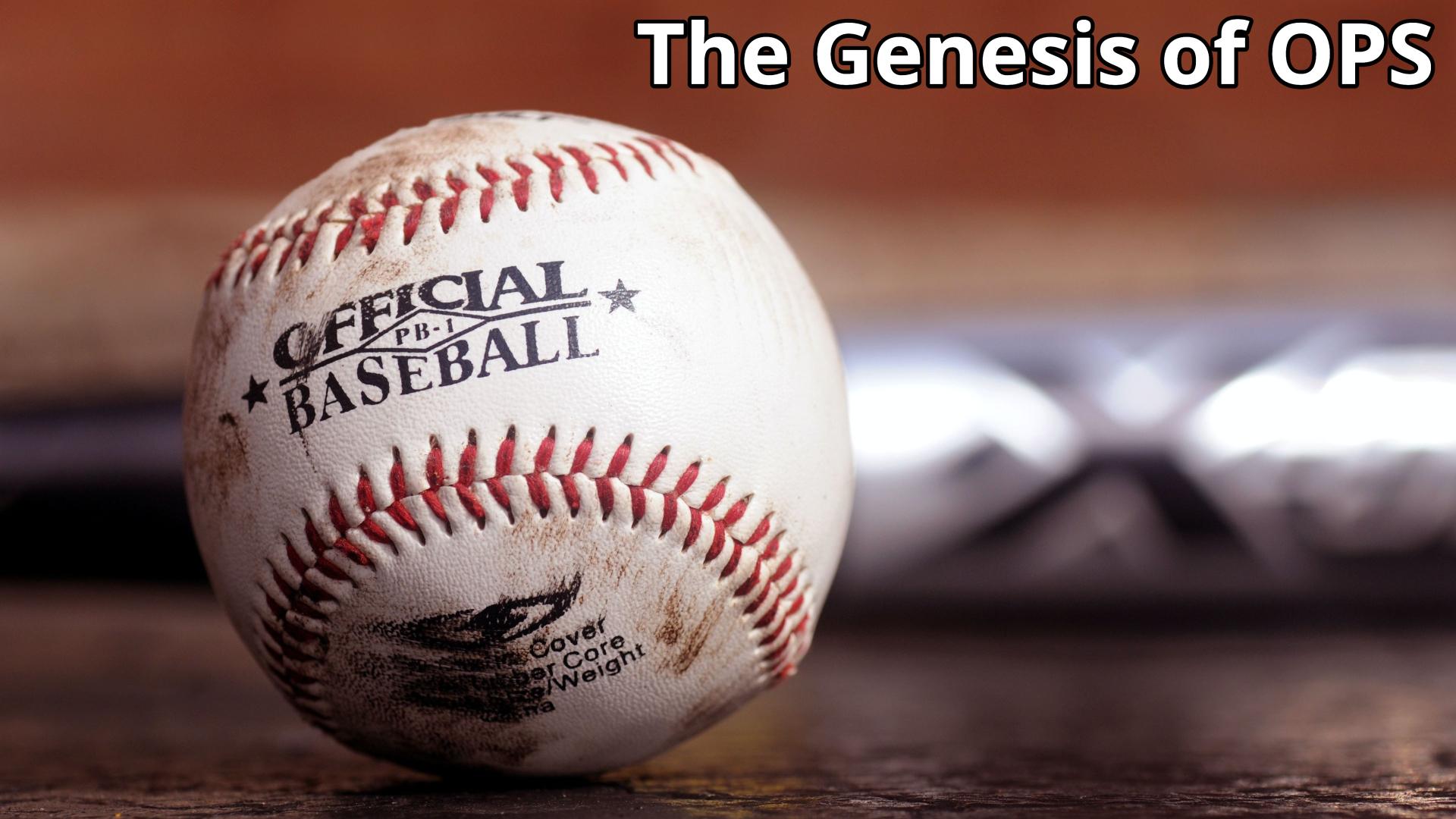OBP stands for On-Base Percentage in baseball. It measures how often a player reaches base per plate appearance.
OBP is a crucial metric in baseball, offering a deeper insight into a player’s offensive value beyond traditional statistics such as batting average. Calculating OBP involves combining hits, walks, and hit-by-pitches, then dividing by the sum of at-bats, walks, hit-by-pitches, and sacrifice flies.
A higher OBP indicates a player’s superior ability to help the team by avoiding outs and creating scoring opportunities. As the game has evolved, OBP has risen in importance, with teams now emphasizing the skill of getting on base as a significant contributor to winning games. This stat has become a cornerstone for player analysis and a key factor in strategic decision-making for lineups and player development.
The Essence Of Obp In Baseball
The On-Base Percentage (OBP) stands tall as a pivotal stat in baseball. Its importance lies in its ability to measure a player’s knack for reaching base. Unlike traditional stats that focus solely on hitting, OBP encompasses a player’s overall plate contributions. It reflects a player’s patience, discipline, and keen eye for selecting the right pitches.
Evaluating Player Value
OBP proves crucial for gauging a baseball player’s worth. Teams look closely at OBP to spot players who excel at keeping innings alive and creating scoring opportunities. High OBP contributors often correlate with a team’s offensive success, making it a preferred metric for player evaluation. Here’s why:
- Frequent base occupancy: Players with a high OBP spend more time on base.
- More scoring chances: More players on base means more runners crossing home plate.
- Better pitch selections: Indicative of a player’s eye for good pitches and taking walks.
Obp Versus Batting Average
Understanding the difference between OBP and batting average shines a light on a player’s full profile. Batting average calculates hits divided by at-bats, yet fails to account for walks and hit-by-pitches. The table below contrasts the two:
| Statistic | Description | What It Measures |
|---|---|---|
| Batting Average (AVG) | Hits divided by at-bats | Pure hitting ability |
| On-Base Percentage (OBP) | Hits + Walks + Hit By Pitch divided by At-bats + Walks + Hit By Pitch + Sacrifice Flies | Overall ability to reach base |
In essence, OBP offers a more holistic view of a player’s offensive impact. It values a walk as much as a single, recognizing the importance of base runners regardless of how they get there. Because of this, OBP has become a critical performance indicator in the world of baseball.

Credit: www.suzitee.com
Obp Calculation Fundamentals
OBP, or On-Base Percentage, is a cornerstone statistic in baseball analytics. It measures a batter’s ability to reach base. Unlike batting average, OBP recognizes that avoiding outs, not just hitting, matters in getting on base. Hence, OBP is critical in evaluating a player’s offensive value. Let’s dive into the OBP Calculation Fundamentals.
Formula Breakdown
The formula for calculating OBP is quite simple. It involves just a few stats:
OBP = (H + BB + HBP) / (AB + BB + HBP + SF)
- H stands for hits.
- BB means walks, also known as base on balls.
- HBP is hit by the pitch.
- AB refers to at-bats.
- SF is sacrifice flies.
Factors Influencing Obp
Factors that move OBP up or down include:
| Factor | Effect on OBP |
|---|---|
| Hits | More hits increase OBP. |
| Walks | More walks lead to higher OBP. |
| Hit By Pitch | Getting hit raises OBP. |
| At-Bats | More at-bats can lower OBP. |
| Sacrifice Flies | Less sacrifice flies might increase OBP. |
Players who consistently reach base are invaluable. They have the chance to score more runs. OBP helps us spot these players. Remember, every base matters.
Historical Perspective On Obp
On-base Percentage (OBP) is a statistic in baseball that measures how often a batter reaches base. It considers hits, walks, and hit-by-pitches. OBP offers a deeper understanding of a player’s performance than traditional batting averages. Now, let’s dive into the historical evolution of this pivotal statistic.
Evolution Over The Decades
OBP has gained prominence over the years. In baseball’s early days, focus lay more on batting averages. Overtime, experts realized OBP better reflected a player’s ability to contribute to scoring. This led to a shift in how players’ offensive value got measured.
From Box Scores to Advanced Metrics, OBP evolved. Important figures in sabermetrics, like Bill James, advocated for OBP’s relevance. By the 2000s, OBP became a core offensive statistic. Teams started selecting players based on their ability to reach base consistently.
- 1900s: Batting average reigned supreme.
- 1950s: OBP began appearing in baseball guides.
- 1970s: Sabermetrics brought OBP into the limelight.
- 2000s: OBP integrated into mainstream baseball analysis.
Notable Obp Achievements
Legendary milestones have shaped the OBP narrative. Players like Ted Williams and Babe Ruth consistently posted high OBPs. Their plate discipline and keen eyes set standards for future generations.
In baseball’s annals, certain seasons stand out for exceptional OBP records:
| Player | Year | OBP |
|---|---|---|
| Ted Williams | 1941 | .553 |
| Barry Bonds | 2004 | .609 |
| Babe Ruth | 1923 | .545 |
This table showcases unmatched OBP achievements through baseball history. Ted Williams’ 1941 season is iconic. He finished the year with a .553 OBP. Barry Bonds eclipsed this in 2004 with a record-setting .609 OBP. Babe Ruth’s 1923 OBP was also an incredible high mark for the era.

Credit: www.pbs.org
Strategies For Improving Obp
On-base percentage (OBP) is key in baseball. It measures how often a player gets on base. Better OBP means more chances to score. Let’s explore tactics to boost OBP.
Plate Discipline Tips
Plate discipline is crucial. It’s about making good choices at bat. Here are ways to improve:
- Eye on the ball: Keep your focus to hit well.
- Know the strike zone: Understand your reach to avoid bad hits.
- Patience is key: Wait for the right pitch to hit.
- Practice makes perfect: Train to recognize pitches better.
Effective Hitting Techniques
Strong hitting boosts OBP. Follow these techniques:
- Stance: A solid stance gives balance for hitting.
- Swing: A consistent swing improves contact with the ball.
- Timing: Hit at the right time for better results.
- Power: Build strength to hit further, making it hard to get out.
Analyzing Obp Leaders
On-base percentage (OBP) is a key statistic in baseball, telling us how often a player reaches base. It’s a vital measure of a player’s overall offensive value. In our ‘Analyzing OBP Leaders’ section, let’s dive into the profiles of those who excel at getting on base, and uncover what truly sets them apart.
Profiles Of Top Performers
Season after season, certain players consistently top the OBP charts. They have a knack for picking the right pitches and making the most of every at-bat.
- Player A: With an OBP of .450, expects pitches like a seasoned pro.
- Player B: Boasts patience at the plate, earning them an impressive .432 OBP.
What Sets Them Apart
OBP leaders share unique traits that make them stand out.
| Skill | Importance |
|---|---|
| Plate Discipline | They know when to swing and when to wait. |
| Eye for Detail | Pitch recognition is second nature to them. |
These qualities are not just luck; they come from hard work and a deep understanding of the game.
Obp’s Role In Player Contracts
In the realm of Major League Baseball (MLB), On-Base Percentage (OBP) is a critical statistic. It measures how often a player reaches base. This statistic has become a major factor in evaluating a player’s skill and worth. As a result, it directly influences player contracts and salaries.
Influence On Salaries
OBP is not just a number on a player’s stat sheet; it holds significant weight in contract negotiations. Players with a high OBP are often seen as valuable assets. Teams are willing to offer higher salaries for players who exhibit a knack for getting on base. This skill increases a team’s chances of scoring runs and winning games. Consequently, such players are in high demand during free agency. Their ability to consistently reach base can lead to lucrative contracts.
Case Studies Of Negotiations
Examining past contract negotiations reveals the impact of OBP on player salaries. Consider the following examples:
- Player A: Boasting an OBP over .400, they secured a deal worth millions more than their peers with lower OBPs.
- Player B: Despite less power at the plate, their high OBP convinced a team to invest in their on-base skills with a multi-year contract.
- Player C: Known for getting on base often, they saw an increase in their salary after a season with an improved OBP.
The Sabermetrics Angle
OBP, or On-Base Percentage, is a hotspot metric in the baseball world. It tells us how often a player reaches base. Yet, sabermetrics takes this further. It weaves OBP into a fabric of advanced stats that redefine player value. Let’s dive into how OBP fits into the grand scheme of baseball analytics.
Obp In Advanced Analytics
On-Base Percentage stands as a key figure in sabermetrics. This stat goes beyond traditional averages, focusing on a player’s ability to avoid outs. A high OBP signals that a player excels at getting on base. Whether by hits, walks, or being hit by a pitch, they increase their team’s chances to score runs. Today’s analysts apply OBP within a range of advanced metrics to gauge a player’s overall impact on the game.
Integration With Other Metrics
OBP doesn’t work alone. It combines with slugging percentage (SLG) to form On-base Plus Slugging (OPS), offering a fuller picture of a player’s offensive contributions. The union of OBP with other metrics like Total Bases and Runs Created (RC) further enhances player evaluation. This integration allows teams and fans to discern a player’s ability to drive in runs and contribute to their team’s success.
- OBP and SLG: Together, these create the OPS metric, a quick glance at offensive capability.
- OBP and RC: They intertwine to determine how a player’s on-base skills translate to actual runs.
Analytics teams harness these metrics to make strategic decisions. Building rosters, planning game tactics, and evaluating potential trades all revolve around such advanced stats. OBP’s integration makes sabermetrics an invaluable tool in modern baseball analysis.
Improving Obp At The Amateur Level
Want to boost on-base percentage (OBP) in amateur baseball? It’s all about reaching base safely. Coaches and players can focus on key strategies to improve this critical metric. Now, let’s break down how.
Coaching Approaches
Effective coaching is crucial for player development. Coaches can start by analyzing each player’s approach at the plate. Personalized feedback helps tailor strategies for improvement. Encouraging patience and discipline contributes to higher OBP.
- Teach the strike zone’s ins and outs.
- Promote selective aggression in hitting.
- Implement video analysis for technique refinement.
Drills And Exercises
Drills are the building blocks of baseball prowess. Exercises focused on eye tracking and swing decisions elevate a player’s ability to get on base.
| Drill | Purpose | Outcome |
|---|---|---|
| Tee Work | Hone swing mechanics | Consistent contact |
| Pitch Recognition | Improve decision-making | Better selectivity |
| O-Swing Drills | Reduce chasing bad pitches | Enhanced plate discipline |
Consistent practice through these drills will lead to an improved on-base percentage. Remember, repetition is key in mastering skills.
The Future Of Obp In Baseball
On-base percentage (OBP) is a key statistic in baseball. It measures how often a batter reaches base. It considers hits, walks, and hit-by-pitches.
Predictive Models
The use of predictive models is reshaping baseball.
Teams now forecast player performance. This includes their potential OBP. Coaches make better decisions. They use future OBP insights. Data drives everything.
Technological Advancements
Technology is driving change in baseball. Wearables track player metrics. They help improve OBP.
Cutting-edge analysis exists. It comes from high-speed cameras and sensors. They capture swing mechanics. They capture pitch dynamics.
AI processes this data. Teams enhance player strategies. They find ways to boost OBP.
Obp In Different Leagues
Understanding On-Base Percentage (OBP) unlocks deeper insights into a player’s effectiveness. From the Major Leagues to international competitions, OBP remains a key metric. Its calculation shares a common formula. But, its implications vary with the league’s level of play.
Comparing International Standards
Baseball stretches beyond the United States, flourishing in countries like Japan and Cuba. Player performance, including OBP, translates differently across borders. Differences in pitching skill and offensive approaches impact OBP readings. Here is a glimpse into how OBP fares in other countries:
- Japan (NPB): In a league renowned for precision and technique, OBPs often reflect meticulous plate discipline.
- Dominican Republic (LIDOM): An environment of aggressive hitting can lead to varied OBP figures.
- Cuba (SNB): Play style and field conditions can also color OBP. Cuban baseball holds a reputation for raw talent and spirited play, influencing the metric.
Minor Leagues Spotlight
Minor League Baseball serves as a proving ground for emerging players. Here, OBP is not just a number. It’s a predictor of potential big league success. Talent evaluators scour over these metrics:
| Level | Significance of OBP |
|---|---|
| Triple-A | Closest to Major League talent, OBP is highly indicative of readiness for the next step. |
| Double-A | Considered a testing ground for prospects, a higher OBP signals advanced plate discipline. |
| Class A | A developmental stage where OBP can highlight growth opportunities for young hitters. |
Players climbing the Minor League ladder aim to boost their OBP. A strong OBP in the minors can fast-track a player to the Majors. Each rung on the minor league ladder serves as a critical metric barometer.
Impact Of Obp On Team Success
The game of baseball is rich with statistics and measurements that gauge player and team performance. Among these, On-base Percentage (OBP) stands out as a critical indicator of a player’s ability to reach base. Yet, it is not just a personal statistic; OBP’s influence extends to team success as well. Teams with higher OBPs often have better chances of scoring runs and, ultimately, winning games. Let’s delve into just how significant OBP can be for a team’s success.
Correlation With Winning Percentages
OBP directly ties to a team’s winning percentage. Data analysis reveals that teams with higher OBPs tend to win more games.
- Higher OBP means more base runners.
- More base runners lead to more run-scoring opportunities.
- Teams that efficiently capitalize on these opportunities often outperform their rivals.
Key statistics from various seasons consistently support this correlation, showing teams with top OBP rankings often end up with above-average win-loss records.
World Series Case Studies
Examining World Series champions can highlight OBP’s impact on the ultimate form of team success. Champions of the past decade show a trend where OBP plays a defining role.
Add more rows as needed| Year | World Series Champion | Team OBP |
|---|---|---|
| 2015 | Kansas City Royals | .322 |
| 2016 | Chicago Cubs | .339 |
| 2017 | Houston Astros | .346 |
In these case studies, teams with a high OBP not only reached the playoffs but went on to win the World Series. This consistency across multiple champions reinforces the importance of OBP in building a winning team.
Criticism And Controversies
Criticism and controversies often surround the metric of On-Base Percentage (OBP) in baseball. As valuable as OBP is in evaluating a player’s ability to reach base, it does have its critics. Not every fan or analyst agrees on how we should interpret these numbers. Let’s delve into the key areas where OBP faces scrutiny.
Limitations Of Obp
OBP, while insightful, doesn’t tell the whole story about a player’s performance. One limitation lies in its failure to consider the context of a player reaching base. All bases are not equal in a game situation. The value of a walk with the bases empty differs from a hit with runners in scoring position. These limitations prompt discussions on whether OBP needs adjustments or complementary metrics for a fuller picture.
- OBP does not distinguish how a player reaches base
- It fails to measure the impact of situational hitting
- Does not account for the quality of pitches a batter faces
Debates In The Baseball Community
The baseball community often engages in spirited debates over the efficacy of OBP. Traditionalists might lean on batting average to gauge a hitter’s talent. In contrast, sabermetricians advocate for OBP due to its inclusiveness of walks and being hit by pitches. Here, the crux of the debate centers on what defines a player’s worth at the plate.
| Traditional Viewpoint | Sabermetric Viewpoint |
|---|---|
| Emphasizes batting average and RBIs | Views OBP as a superior reflection of productivity |
These debates aren’t just academic. They influence team decisions, from player acquisitions to in-game strategy. With analytics wielding more influence in the game, OBP remains at the forefront, sparking continuous dialogue and analysis.
Educating Fans On Obp
Are you a baseball fan? Here’s something important. It’s about OBP, or On-Base Percentage. OBP is a measure of how often a batter reaches base. It’s used to gauge a player’s skill. Understanding OBP can make games more exciting. Fans, let’s dive into OBP and learn how it changes the way we watch baseball.
Educating Fans On Obp
Enhancing Viewing Experience
Understanding OBP can change how you watch baseball. Here’s why. Players with high OBP are often game changers. They help the team score more runs. Spotting these players adds thrill to every play.
Obp In Broadcasting
Broadcasts sometimes mention OBP. They use it to talk about player performance. When announcers talk about OBP, they help fans understand the game better. Viewers learn what makes a player valuable. Strong OBP numbers mean a player is good at helping the team win.
Here’s a simple table to show OBP:
| Player | OBP |
|---|---|
| Player A | .350 |
| Player B | .305 |
| Player C | .400 |
In this table, Player C has the highest OBP. This means Player C is really good at getting on base.

Credit: www.suzitee.com
Frequently Asked Questions Of What Is Obp In Baseball?
What Does Obp Stand For In Baseball?
OBP stands for On-Base Percentage, a key statistic that measures how often a batter reaches base.
How Is Baseball Obp Calculated?
Baseball OBP is calculated by adding Hits, Walks, and Hit by Pitches, then dividing by At Bats, Walks, Hit by Pitches, and Sacrifice Flies.
Why Is Obp Important In Baseball?
OBP is crucial because it provides insight into a player’s ability to reach base and create scoring opportunities.
Conclusion
Understanding OBP is crucial for gauging a player’s ability to reach base. It’s a significant statistic for any baseball enthusiast or analyst aiming to evaluate offensive contributions. By mastering what OBP represents, fans and players alike can appreciate the strategic nuances of baseball, deepening their love for the game.


